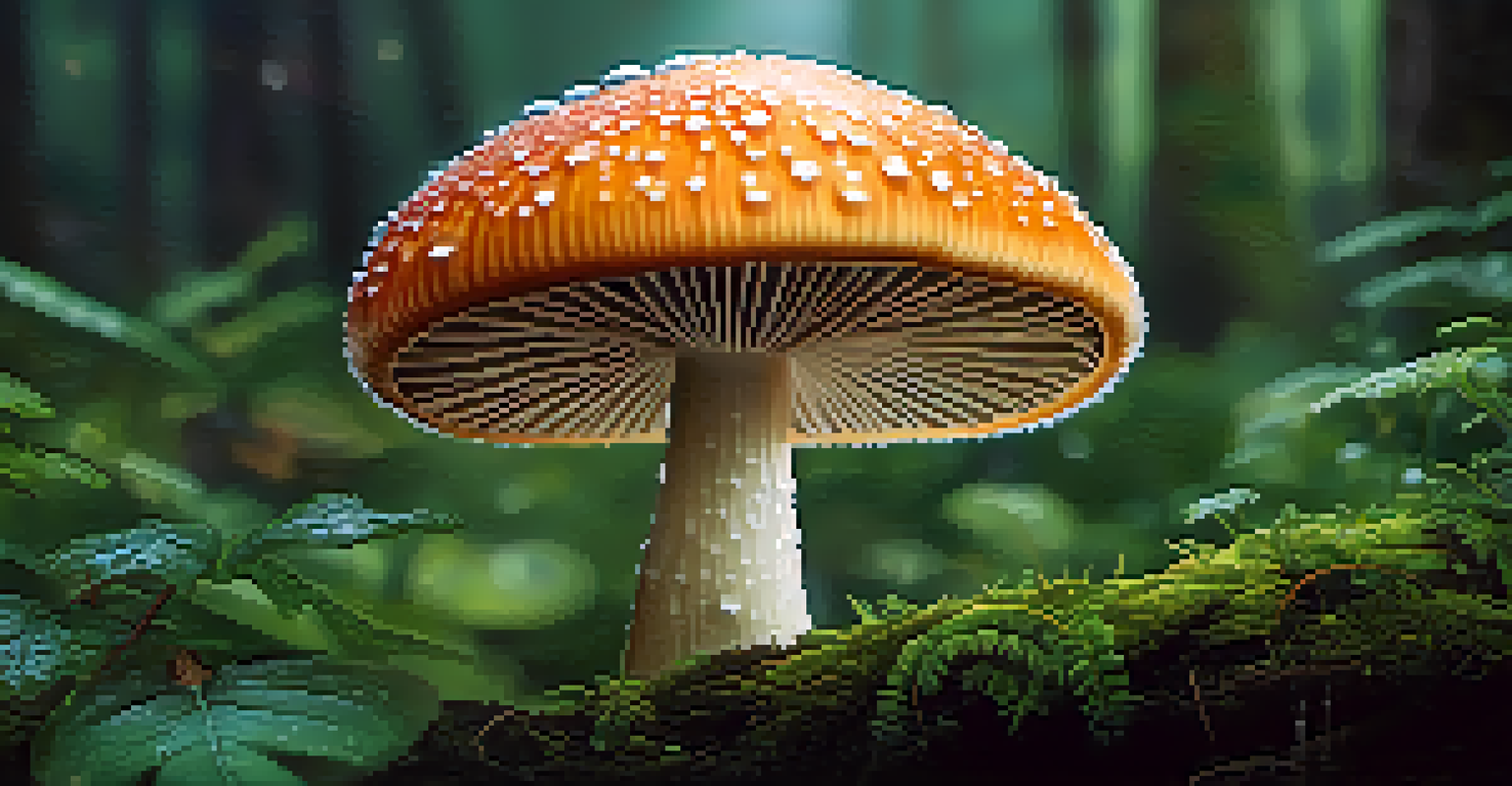The Science Behind Entheogens and Holistic Therapies

Understanding Entheogens: A Brief Overview
Entheogens are substances that people use to enhance spiritual experiences and alter consciousness. These natural compounds have been utilized for centuries in various cultures, often during rituals or ceremonies. By facilitating a deeper connection to oneself and the universe, entheogens can offer profound insights and transformative experiences.
The use of entheogens is a powerful tool for psychological transformation, revealing the depths of our minds and the potential for healing.
Common examples include psilocybin mushrooms, ayahuasca, and peyote. Each of these substances interacts uniquely with the brain, often leading to vivid experiences that can help individuals confront personal challenges or traumas. The resurgence of interest in these compounds is partly due to modern scientific research highlighting their therapeutic potential.
Understanding the effects of entheogens is essential to appreciating their role in holistic therapies. As we delve deeper into their science, we can uncover how these substances may help individuals heal on multiple levels—physically, emotionally, and spiritually.
The Role of Neurotransmitters in Healing
Neurotransmitters are chemical messengers in the brain that play a critical role in regulating mood, cognition, and overall mental health. When entheogens are consumed, they often influence these neurotransmitters, particularly serotonin and dopamine. This interaction can lead to enhanced emotional well-being and a shift in perspective on life’s challenges.

For instance, psilocybin has been shown to increase serotonin levels, which can help alleviate symptoms of depression and anxiety. This biochemical change can provide individuals with a renewed sense of hope and clarity. Through this lens, entheogens become not just substances but tools for psychological transformation.
Entheogens Enhance Healing
Entheogens offer profound insights and therapeutic potential, facilitating healing on physical, emotional, and spiritual levels.
Moreover, the impact of these substances on neurotransmitter systems can lead to lasting changes in the brain, promoting neuroplasticity—the brain's ability to reorganize itself. This means that the benefits of entheogenic experiences can extend far beyond the initial trip, paving the way for long-term healing.
The Mind-Body Connection in Holistic Therapies
Holistic therapies emphasize the interconnectedness of the mind, body, and spirit. This approach recognizes that physical symptoms often have psychological or emotional roots, and vice versa. By addressing all aspects of a person's being, holistic therapies aim to create a balanced state of health and well-being.
In the midst of movement and chaos, keep stillness inside of you.
Entheogens can play a pivotal role in this connection. For example, an individual undergoing therapy for chronic pain might find that a guided entheogenic experience helps them release emotional trauma tied to their physical condition. This integration of mind and body can lead to profound healing that goes beyond traditional medical treatments.
Ultimately, understanding the mind-body connection allows practitioners to create more effective treatment plans. By incorporating entheogens into holistic approaches, therapists can offer clients a pathway to deeper self-discovery and healing.
Cultural Perspectives on Entheogens
Throughout history, various cultures have used entheogens in spiritual and healing practices. Indigenous peoples often view these substances as sacred, using them to connect with the divine and seek guidance. This cultural perspective emphasizes respect and reverence for the plants, highlighting their role as facilitators of spiritual growth.
In contrast, modern society has often stigmatized these substances, associating them with recreational use rather than healing. However, as research continues to reveal their therapeutic potential, there’s a renewed interest in understanding these ancient practices. This cultural shift invites us to reconsider the value of entheogens in both spiritual and psychological contexts.
Neurotransmitters and Transformation
These substances influence neurotransmitters like serotonin and dopamine, leading to enhanced emotional well-being and lasting changes in mental health.
By exploring the cultural significance of entheogens, we can gain insight into how they have been utilized across time and geography. This awareness fosters a greater appreciation for their role in holistic therapies and the importance of approaching them with mindfulness and respect.
Modern Research on Entheogens and Therapy
Modern scientific research has begun to validate the therapeutic benefits of entheogens, leading to a resurgence of interest in their use in clinical settings. Studies have shown promising results in treating conditions such as PTSD, depression, and addiction. This research highlights the potential of entheogens to facilitate profound psychological healing and personal transformation.
For instance, clinical trials exploring psilocybin therapy have demonstrated significant improvements in mood and emotional regulation among participants. These findings challenge the traditional views of mental health treatment and suggest that entheogens could be a valuable addition to therapy protocols. The evidence supports the idea that these substances can catalyze breakthroughs in personal insights and emotional healing.
As more studies emerge, the conversation around entheogens is shifting from taboo to therapeutic. This evolution in perception encourages a more open-minded approach, paving the way for integrative practices that combine modern psychology with ancient wisdom.
Safety and Ethical Considerations
While entheogens can offer transformative experiences, it's crucial to approach their use with caution and awareness. The context in which they are consumed significantly impacts their effects, making it essential to utilize them in safe, controlled environments, ideally under professional guidance. This approach ensures that individuals can navigate their experiences while minimizing potential risks.
Ethical considerations also play a vital role in the conversation around entheogens. Issues such as cultural appropriation and the commodification of sacred practices must be addressed as the interest in these substances grows. It’s important to respect the traditions from which these practices originate and to engage with them responsibly.
Cultural and Ethical Awareness
Respecting the cultural significance and ethical considerations surrounding entheogens is crucial as their therapeutic use gains popularity.
Ultimately, prioritizing safety and ethical considerations fosters a more respectful and informed dialogue about entheogens. By doing so, we can create an environment that supports healing while honoring the cultural significance of these powerful substances.
Integrating Entheogens into Holistic Healing Practices
Integrating entheogens into holistic healing practices can create a multi-faceted approach to wellness. Therapists and practitioners can work collaboratively with clients, incorporating these substances into their treatment plans alongside traditional therapies. This integration allows for a more comprehensive understanding of individual needs and experiences.
For example, a therapist might suggest a guided entheogenic journey as part of a broader therapeutic process involving talk therapy, mindfulness, and lifestyle changes. This personalized approach can enhance the healing experience, offering clients unique insights into their challenges and opportunities for growth.

As we continue to explore the benefits of entheogens, it’s essential to cultivate a supportive community that encourages informed and responsible use. By fostering collaboration among practitioners, clients, and researchers, we can pave the way for a more holistic approach to healing that honors both science and spirituality.